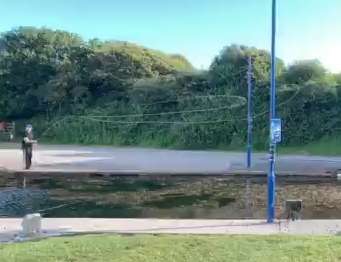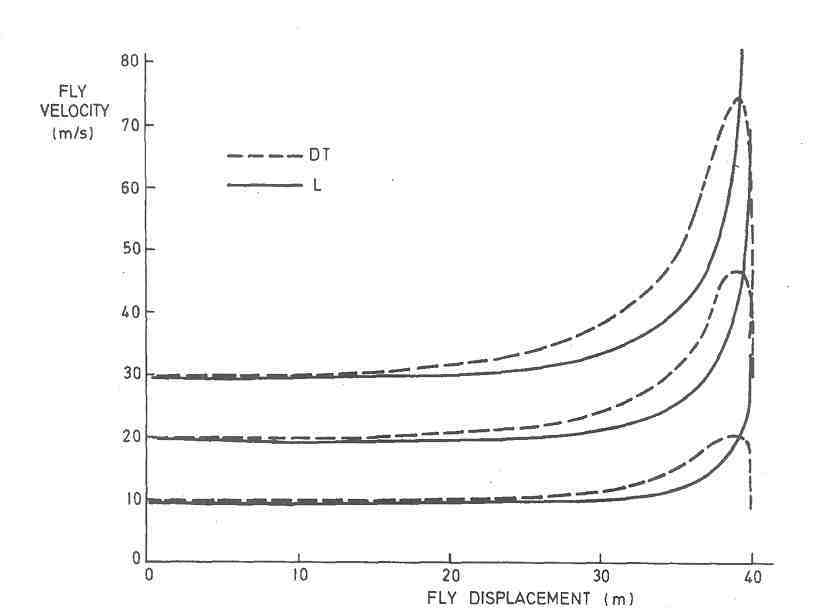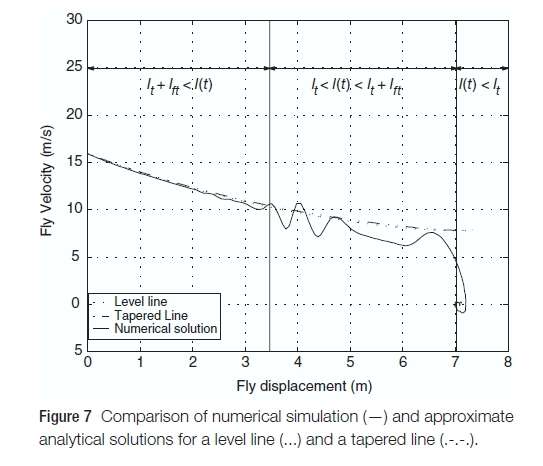PLEASE NOTE: In order to post on the Board you need to have registered. To register please email paul@sexyloops.com including your real name and username. Registration takes less than 24hrs, unless Paul is fishing deep in the jungle!
Two heads cast at the same time
Moderator: Torsten
- Lee Cummings
- Posts: 364
- Joined: Tue Feb 19, 2013 12:23 pm
Two heads cast at the same time
Both heads are identical RIO Scandi taper shooting heads.
The head with the orange fly, is attached to the shooting line the wrong way round.
Re: Two heads cast at the same time
Fab film Lee.
On my iPad I can’t tell which is the orange fly. Can you give us a clue?
Ta!
Will
On my iPad I can’t tell which is the orange fly. Can you give us a clue?
Ta!
Will
Lineslinger
Barrio Pro-team
SGAIC
AAPGAI
"The only advice it is necessary to give the angler… is to avoid any approach to foppery, as trout have the most thorough contempt for a fop…”
WC Stewart
Barrio Pro-team
SGAIC
AAPGAI
"The only advice it is necessary to give the angler… is to avoid any approach to foppery, as trout have the most thorough contempt for a fop…”
WC Stewart
- gordonjudd
- Posts: 1858
- Joined: Sat Jan 19, 2013 11:36 pm
- Location: Southern California
Re: Two heads cast at the same time
Lee,The head with the orange fly, is attached to the shooting line the wrong way round.
I cannot see the orange fly in your video.
In the frame grab below is the narrow loop that is lagging behind the wide loop for the head turned the wrong way around? Thus it has a big acceleration at the end of the cast when the thick portion of the head starts going around the loop?


This was exactly the experiment I was hoping Paul could video. What is its the frame rate? Thanks for sharing it.
Did you have any overhang with a length of running line or were just the 31 foot heads outside of the rod tip in these casts?
Gordy
- Lee Cummings
- Posts: 364
- Joined: Tue Feb 19, 2013 12:23 pm
Re: Two heads cast at the same time
The tighter loop which unrolls last (and accelerates later in all casts) is attached the wrong way round (front taper to the running line)
Both heads are 39ft long with and addition of approximately 9ft of 1mm coated running line attached to the front and then a 6ft section of mono to the fly.
There was approximately 2ft of shooting line overhang
Both heads are 39ft long with and addition of approximately 9ft of 1mm coated running line attached to the front and then a 6ft section of mono to the fly.
There was approximately 2ft of shooting line overhang
Re: Two heads cast at the same time
Again, an absolutely awesome video Lee. These casts clearly show the effect of taper design on a line.
Cheers,
Graeme
Cheers,
Graeme
FFi CCI
Re: Two heads cast at the same time
+1. Thanks Lee. Very useful.
And btw particularly liked the roll cast one too. Interesting comparison with the overhead.
Cheers
Mark
"The line of beauty is the result of perfect economy." R. W. Emerson.
https://thecuriousflycaster.com
https://thecuriousflycaster.com
- Paul Arden
- Site Admin
- Posts: 19577
- Joined: Thu Jan 03, 2013 11:20 am
- Location: Belum Rainforest
- Contact:
Re: Two heads cast at the same time
Excellent video mate! That’s much clearer than anything I’ve filmed! 
Cheers, Paul
Cheers, Paul
- Paul Arden
- Site Admin
- Posts: 19577
- Joined: Thu Jan 03, 2013 11:20 am
- Location: Belum Rainforest
- Contact:
Re: Two heads cast at the same time
Ok I posted some of these questions to Josh Jenkins and Bruce Richards at SA. Josh is Bruce’s successor.
Josh writes:
Josh writes:
Bruce writes:Hey Paul,
I can have a go and Bruce can correct me where needed. To start, let’s take air resistance out of the equation. Obviously, air resistance is significant but it’s easier to illustrate the point without it. The energy of a moving object is called kinetic energy and is governed by this equation: Ek= ½ mv^2 (m=mass in motion, v=velocity). The potential energy stored in a bent rod is transformed into kinetic energy in the line.
Imagine that a fly line traveling in a loop has two separate mass sections: the first is mass that is no longer moving (the bottom leg) and mass that is still in motion (the top leg). As the loop unravels, mass is transferred from the top leg to the bottom leg as the top leg gets shorter. So assuming we don’t lose any energy, according to the kinetic energy equation, as the mass in motion reduces, the speed goes up exponentially!
Now imagine that we use the taper in the fly line to control the rate at which the mass of the line is transferred from the top to bottom leg. By pushing mass towards the front of the line (short front tapers, large tip diameters), we can slow down the speed at which the line turns over. Conversely, if we push mass towards the back of the head (think triangle taper) we can cause the loop to unroll much faster for the same total line weight and input energy.
So without air resistance, a line with forward mass will turnover slower than a line with rear-biased mass. Air resistance is dependent on a number of factors but the biggest factor is velocity. This equation is also dependent on v^2. So even though the rear-biased line would theoretically have a smaller diameter in front, it will still encounter a large amount of air resistance because it is traveling faster than the forward biased line.
The final part of all of this is momentum which is governed by this equation: p=m*v (p=momentum, m=mass in motion, v=velocity). So a rear biased line travels faster, but has less moving mass at the end of the loop. A forward biased line travels slower but has more moving mass at the end of the loop. Air resistance levels the playing field a bit, so that the difference in velocity isn’t overly large. Because of that, a forward biased line with have more momentum at the end of the loop, which is why they are generally regarded as better matched with large flies, but they also may have too much momentum to present a small fly delicately.
Does this all make sense?
And,That certainly covers the physics! When Noel explained all that to me years ago he also removed the air to make the point more clearly. Without energy loss to wind resistance the top leg of the line will accelerate dramatically. As the top leg gets very short it's velocity becomes very fast, approaching the speed of light just before the loop opens completely. That would break off some flies! Wind resistance increases exponentially with line velocity, as top leg speed tries to increase WR largely prevents it. The straighter the top leg the less exposure to WR. Noel's calculations showed that straight top leg loops actually do accelerate initially but then WR stops that and a velocity equilibrium is reached. Very interesting stuff and clearly shows how good technique and a straight top leg are more important than line speed, to a point. Of course those who can throw a straight tip leg AND throw it really fast are going to win!
Bruce
Yes, Josh is right on the money. Great video! Clearly shows the delayed turnover with rapid acceleration/kick at the end..
Bruce
- gordonjudd
- Posts: 1858
- Joined: Sat Jan 19, 2013 11:36 pm
- Location: Southern California
Re: Two heads cast at the same time
Bruce,Noel's calculations showed that straight top leg loops actually do accelerate initially but then WR stops that and a velocity equilibrium is reached.
That is just the reverse of the plots in Lingard note.

The Gatti-Bono paper looked at what happens with a DT line so it does not make sense that the velocity would increase when the drag losses are near their maximum at the start of fly velocity history.
Unfortunately the skin drag coefficient she chose (.075) to use in her test case was about 15 times larger than the .005 value measured by Gaddis. Consequently I don't think the constantly decreasing velocity profile show in her paper is very realistic.

Gordy
Re: Two heads cast at the same time
Paul
Many thanks to Bruce and Josh for those replies. I feel that those, with Graeme’s sterling work on the other thread, I’m much nearer understanding all this.
Great work!
Will
Many thanks to Bruce and Josh for those replies. I feel that those, with Graeme’s sterling work on the other thread, I’m much nearer understanding all this.
Great work!
Will
Lineslinger
Barrio Pro-team
SGAIC
AAPGAI
"The only advice it is necessary to give the angler… is to avoid any approach to foppery, as trout have the most thorough contempt for a fop…”
WC Stewart
Barrio Pro-team
SGAIC
AAPGAI
"The only advice it is necessary to give the angler… is to avoid any approach to foppery, as trout have the most thorough contempt for a fop…”
WC Stewart
